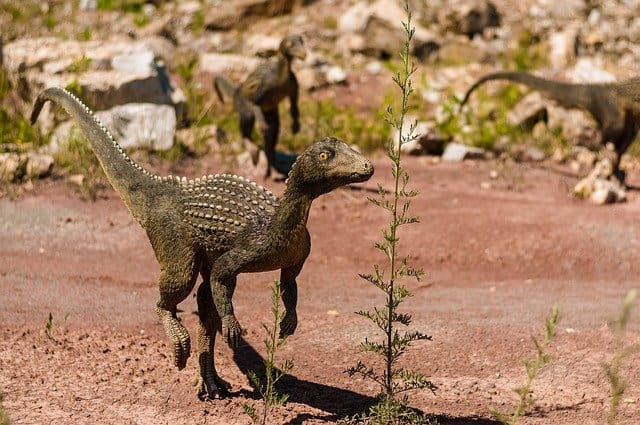A very small dinosaur whose size could be compared to modern-day chicken has been found to have an incredible sense of touch due to scales on its tail.
Juravenator starki, a small species of Dinosaur has been found to have sensory scales on its tail which helped in its survival in a study. The dinosaur lived in current Germany about 150 million years ago in Late Jurassic age.
The study shows that these Scales would have helped the dinosaur in catching prey at night and make sense of their surrounding.
The scales are similar to those found on modern-day crocodile leading scientists to further assert their case. The crocodile uses these scales or integumentary sense organ (ISOs) to catch its prey by deciphering their movement and in determining water temperature and acidity.
The study was published in Current Biology by Phil R. Bell and Christophe Hendrickx. The study was conducted on the only discovered fossil of Juravenator starki, which is quite well preserved and has its complete skeleton, some soft tissue and skin around its tail.
Lead author of the study Phil Bell mentioned the scales as “they were very regular—all the same size and limited to the band under the tail—so there was no mistaking these were real features, and they had very peculiar anatomy to them.”
The study also refuted the idea that these sensory scales were ornamented scales, stating all living organisms have evolved some form of sensory capabilities in different parts of their body that can react to external stimuli.
The study has been under peer scrutiny with paleontologist Paul Barrett, at Natural History Museum, commenting that “the authors make a strong case” and the noticeable resemblance between the modern crocodile and Juravenator scales “is striking”.
Whereas Caleb Brown, curator at the Royal Tyrrell Museum in Drumheller, Canada, told National Geographic that “The morphology of the scales is something I don’t think we’ve seen before in dinosaurs, and is a pretty close match. Like all other animals, dinosaurs would have needed to gather information on their environment in order to forage and move around efficiently. A tactile sense, in addition to the more obvious senses of sight, smell, and hearing, would give them another way to get this information”.
